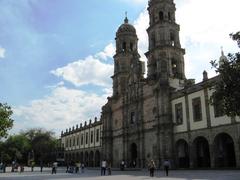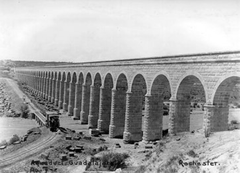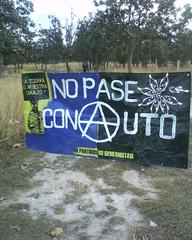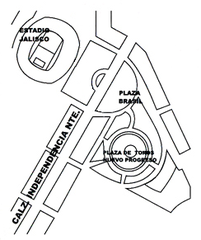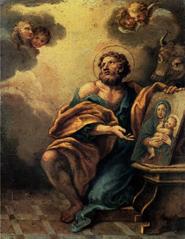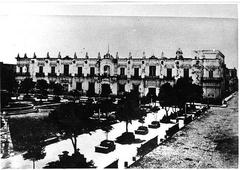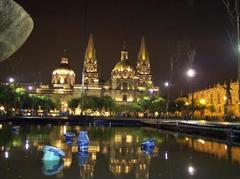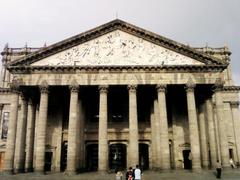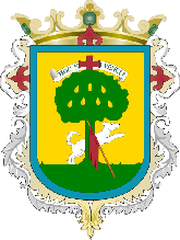
Refugio Guadalajara Mexico: Visiting Hours, Tickets, and Historical Sites Guide
Date: 04/07/2025
Introduction
Centro Cultural El Refugio, nestled in the heart of Tlaquepaque within the Guadalajara metropolitan area, stands as a vibrant testament to Mexico’s colonial past and dynamic artistic present. Originally a 19th-century hospital and spiritual refuge managed by the Josefinas nuns, the institution later served as a psychiatric facility before being abandoned in 1979. Meticulously restored in the 1980s, El Refugio now flourishes as a major cultural center—home to museums, workshops, and prestigious art fairs, and a living symbol of adaptive reuse in heritage conservation. Its expansive courtyards, original fountains, and thick adobe walls embody regional craftsmanship and provide a unique setting for both locals and travelers to immerse themselves in the traditions, art, and history of Jalisco.
This comprehensive guide details everything you need to plan a visit: historical highlights, architectural significance, visiting hours, ticketing, accessibility, practical tips, and nearby attractions. El Refugio is not only a window into Guadalajara’s cultural heritage; it is an essential stop for anyone seeking authentic experiences in Mexico.
(Tlaquepaque.gob.mx, programadestinosmexico.com, playasyplazas.com)
Table of Contents
- Introduction
- Historical Background
- Architectural Significance
- Visitor Information
- Facilities and Permanent Institutions
- Cultural Programming and Events
- Nearby Attractions and Day Trips
- Practical Tips and FAQ
- Conclusion and Final Tips
- References
Historical Background
Origins and Early Purpose
El Refugio’s construction began in the late 19th century, with records and an inscribed cornerstone indicating 1859 as the likely starting date (Tlaquepaque.gob.mx). Envisioned by Fray Luis Argüello, the building originally functioned as a hospital and retreat for the needy—operated as “Casa de Salud Josefina” under the stewardship of the Josefinas nuns. The hospital and chapel complex was completed by 1893, serving the physical and spiritual needs of Tlaquepaque’s residents for decades (programadestinosmexico.com).
Decline and Abandonment
The facility continued to operate as a hospital and psychiatric center until 1979. The departure of the Josefinas in 1935 marked a shift in its management and use, after which the site began to decline. Neglect led to overgrown gardens and deteriorating infrastructure, reflecting the fate of many historic sites impacted by urban development and shifting priorities (graficos.gruporeforma.com).
Restoration and Cultural Rebirth
Recognizing its historic and architectural value, the Tlaquepaque municipality acquired El Refugio in 1983, launching a comprehensive restoration project a year later. Original colonial features—such as the signature octagonal fountains, thick adobe walls, and shaded courtyards—were preserved, while the interiors were adapted for cultural use. El Refugio was reborn as a cultural center in 1985 and quickly became a hub for art, music, and community events (programadestinosmexico.com).
Architectural Significance
Colonial Style and Layout
Spanning nearly 10,000 square meters, El Refugio is one of Tlaquepaque’s most distinguished examples of colonial-era architecture (Tlaquepaque.gob.mx). The building features interconnected patios, arcaded walkways, thick adobe and stone walls, and high ceilings, all designed for the region’s climate and reflecting local construction traditions. Local materials—including clay tiles and stone—highlight the artistry of Tlaquepaque’s craftspeople.
Adaptive Reuse and Preservation
The transformation of El Refugio from a hospital to a cultural center is a hallmark of adaptive reuse, preserving both tangible and intangible heritage (archdaily.com). Today, the building houses three main areas: the Pantaleón Panduro National Ceramic Museum (in the former chapel), the Ángel Carranza School of Arts and Crafts, and multiple exhibition and performance spaces (programadestinosmexico.com). Modern amenities such as ramps and elevators have been seamlessly integrated to ensure accessibility.
Legends and Cultural Memory
El Refugio is steeped in legend. Stories of ghostly apparitions—particularly of nuns—and unexplained voices contribute to its mystique, enriching the visitor experience with layers of local folklore (graficos.gruporeforma.com).
Visitor Information
Location and Access
- Address: Donato Guerra 160, Colonia Centro, Tlaquepaque, Jalisco.
- Getting There: Easily accessible by city bus, taxi, Uber/Didi, or the Tapatío Tour bus. The Tlaquepaque Centro light rail station (Line 3) is about a 10-minute walk away (playasyplazas.com, Guadalajara Metro Map).
- Airport: About 16 km from Miguel Hidalgo y Costilla International Airport; 25–35 minutes by taxi or ride-share (LiveWell Mexico: GDL Airport Guide).
Visiting Hours and Tickets
- Open: Tuesday to Sunday, typically 10:00 AM – 6:00 PM (some sources note 9:00 AM – 7:00 PM; verify for special events).
- Admission: Free for permanent exhibitions; special events and workshops may require paid tickets (30–100 MXN). Tickets can be purchased on-site or through official event pages.
- Guided Tours: Available by appointment or during special events; inquire at the information desk upon arrival.
What to See and Do
- Pantaleón Panduro National Ceramic Museum: Showcases award-winning ceramics and Mexican folk art.
- Ángel Carranza School of Arts and Crafts: Offers classes and workshops in visual arts, music, and traditional crafts.
- Exhibition Halls: Host rotating art, photography, and cultural displays.
- Cineforo Auditorium: Venue for film screenings, lectures, and performances.
- Gardens and Patios: Eight gardens and central patio provide serene relaxation spots and venues for outdoor events.
Accessibility and Amenities
- Physical Access: Ramps, elevators, and accessible restrooms are available. Some historic areas may have uneven floors.
- Restrooms: Clean and well-maintained.
- Gift Shop: Regional crafts and souvenirs.
- Cafeteria: Light snacks and refreshments with local flavors.
- Wi-Fi: Free in public areas.
- Parking: Limited; public transport recommended during peak times (Centro Cultural El Refugio - Wanderlog).
Safety and Cultural Etiquette
- Safety: Tlaquepaque is considered safe for tourists, especially in central areas. Use common sense and keep valuables secure (mexicotravelsecrets.com).
- Photography: Allowed in most areas; restrictions may apply in certain exhibitions—check posted signs or ask staff.
- Dress Code: Modest, comfortable attire is appropriate; festive clothing is welcome during local events.
- Language: Basic English is spoken by some staff; Spanish is helpful for deeper engagement.
Facilities and Permanent Institutions
- Museo Pantaleón Panduro: Mexico’s premier ceramic art museum.
- Escuela de Artes y Oficios Ángel Carranza: Diverse arts education for all ages.
- Municipal Cultural Offices: Includes Tlaquepaque’s chronicler and cultural administration.
Cultural Programming and Events
Major Events
- Premio Nacional de la Cerámica: Prestigious annual ceramics competition.
- TlaquepArte: Renowned craft fair with live demonstrations and performances.
- Expo ENART: Biannual international folk art and crafts trade fair.
Regular Programming
- Art exhibitions, concerts, theater and dance performances, film screenings, workshops, and literary events.
- Educational outreach and university partnerships.
Artistic Highlights
- Monumental mural by Guillermo Chávez Vega in the chapel.
- Legends and ghost stories add to the site’s allure.
Nearby Attractions and Day Trips
- Andador Independencia: Pedestrian street with artisan shops and galleries.
- Parroquia de San Pedro Apóstol: Historic church a short walk away.
- Plaza Principal: Lively central square for music and markets.
- Museo Regional de la Cerámica: Celebrates local pottery traditions.
- El Parián: Historic arcade with restaurants, bars, and live mariachi.
- Guadalajara Historic Center: Easy taxi/bus ride for colonial landmarks.
- Tequila, Chapala, and Ajijic: Day trips for agave fields, lakeside scenery, and folk culture.
Practical Tips and FAQ
Practical Advice
- Visit on weekdays for a quieter experience; weekends and festival days are lively.
- Carry cash for small purchases; major cards accepted at most venues.
- Light clothing, comfortable shoes, and sun protection are recommended.
- Check the event calendar before your visit (Centro Cultural El Refugio - Wanderlog).
Frequently Asked Questions
Q: What are the visiting hours?
A: Generally 10:00 AM – 6:00 PM, Tuesday through Sunday. Confirm for special events.
Q: Is there an entry fee?
A: Admission to most areas is free; some events/workshops may charge a fee.
Q: Are guided tours available?
A: Yes, inquire at the information desk or book in advance.
Q: Is the center accessible for wheelchairs?
A: Yes, with ramps, elevators, and accessible restrooms.
Q: Can I take photos?
A: Usually permitted; check for restrictions.
Q: Where can I buy tickets for special events?
A: At the entrance or via official event pages; early purchase recommended for popular events.
Conclusion and Final Tips
Centro Cultural El Refugio is a cultural treasure that bridges Tlaquepaque’s colonial legacy with its modern artistic vibrancy. With its free admission, accessible facilities, and year-round calendar of exhibitions and events, El Refugio is an essential stop for anyone exploring Guadalajara and Jalisco. Enhance your visit by joining guided tours, attending special exhibitions, and venturing out to nearby artisan markets and historic sites. For real-time updates, event schedules, and interactive maps, download the Audiala app. Let El Refugio be your gateway to the heart of Jalisco’s rich cultural tapestry.
(Centro Cultural El Refugio - Wanderlog, Mexico Travel Secrets, programadestinosmexico.com)
References
- Tlaquepaque.gob.mx
- Centro Cultural El Refugio de Aparecidos: Olvido e Historia – graficos.gruporeforma.com
- Centro Cultural El Refugio Tlaquepaque – programadestinosmexico.com
- A Guide to Visiting San Pedro Tlaquepaque, Jalisco – playasyplazas.com
- Is Guadalajara Safe? Travel Tips & Advice – mexicotravelsecrets.com
- Centro Cultural El Refugio – Wanderlog
- Travel Like a Boss: Is It Safe to Travel to Guadalajara?
- Lonely Planet: Things to Know Before Traveling to Guadalajara
- LiveWell Mexico: GDL Airport Guide
- Mexico Travel Secrets: Things to Do in Guadalajara
- Travel Vagabonds: Guadalajara Packing List
- Out in Mexico: Things to Do in Guadalajara
- Travellers Worldwide: Best Time to Visit Guadalajara

